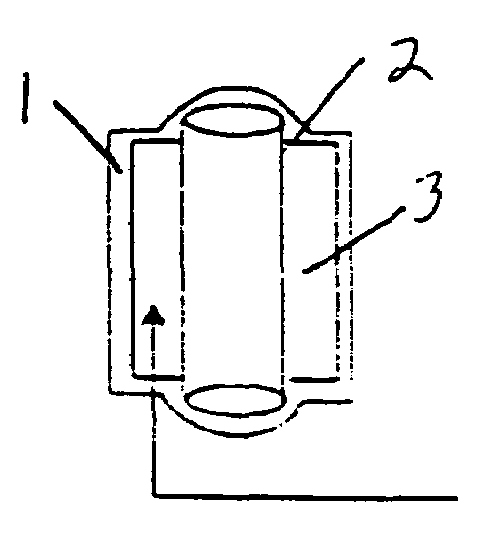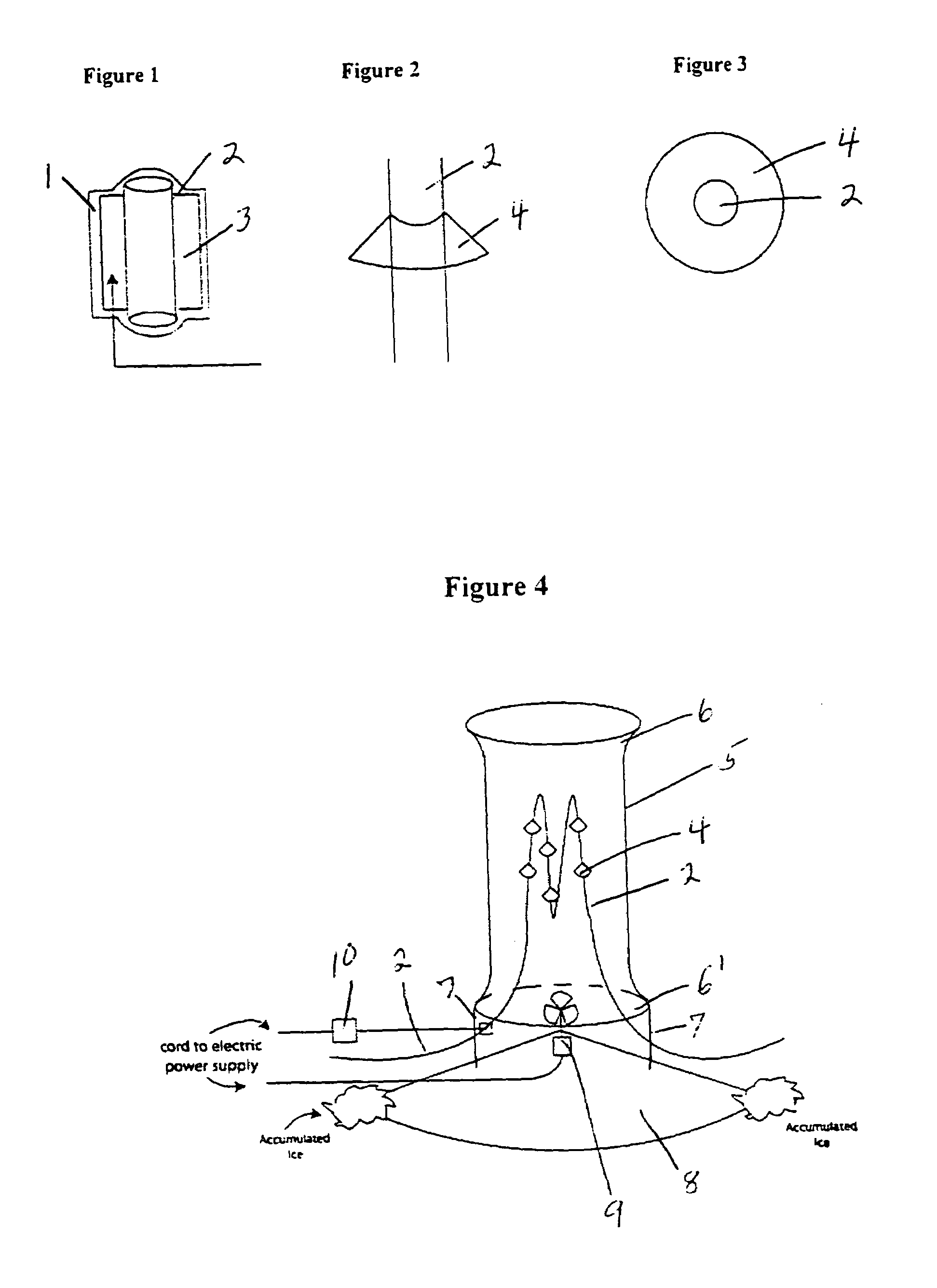Method and apparatus for inhibiting ice accumulation in HVAC systems
- Summary
- Abstract
- Description
- Claims
- Application Information
AI Technical Summary
Benefits of technology
Problems solved by technology
Method used
Image
Examples
Embodiment Construction
[0021]A method and apparatus for inhibiting condensation ice accumulation on heat transfer systems, including refrigerant-based heating and cooling systems, and on an evaporative cooling system, according to the invention, utilizes a non-stick coating applied to heat exchange components and other exterior surface areas of the refrigeration system where ice accumulation is not desirable because such ice decreases overall system operational efficiencies. Additionally, according to the invention, a certain design for outdoor air heat exchange means, and an optional vibrator, enhance the ability to eliminate condensation ice build-up.
[0022]In one embodiment of the invention, as shown via a side view in FIG. 1, not drawn to scale, a heat exchange component of a heat transfer system is shown. The heat exchange component is a segment of fluid (such as refrigerant fluid) transport tubing 2 with two exterior expanded surface area heat transfer fins 3 in thermal contact with, and arranged in ...
PUM
 Login to View More
Login to View More Abstract
Description
Claims
Application Information
 Login to View More
Login to View More - R&D
- Intellectual Property
- Life Sciences
- Materials
- Tech Scout
- Unparalleled Data Quality
- Higher Quality Content
- 60% Fewer Hallucinations
Browse by: Latest US Patents, China's latest patents, Technical Efficacy Thesaurus, Application Domain, Technology Topic, Popular Technical Reports.
© 2025 PatSnap. All rights reserved.Legal|Privacy policy|Modern Slavery Act Transparency Statement|Sitemap|About US| Contact US: help@patsnap.com


